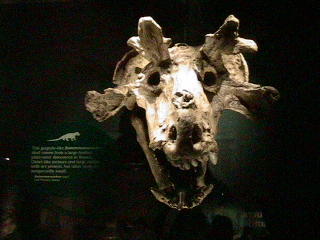Appointed to Princeton as an instructor after completing his doctoral studies, Langlands taught there for seven years and was promoted to associate professor. He spent 1964-65 at the University of California, Berkeley as a Miller Foundation Fellow and an Alfred P Sloan Fellow. Then in 1967 he returned to Yale University as a full professor. However Langlands spent 1967-68 visiting in Ankara, Turkey having an office next to that of Cahit Arf. After five years at Yale he returned again to Princeton, this time as professor of mathematics at the Institute for Advanced Study. He has remained at the Institute for Advanced Study since his appointment there in 1972.
In 1967 he wrote a letter to Weil which contains profound mathematical ideas which continue to drive a whole area of mathematical research. The letter was 17 pages hand-written and sent in January 1967. It sketched what soon became known as "the Langlands conjectures". Weil had the letter typed and this typed version circulated widely among mathematicians interested in the topics. Casselman writes in [3] that the letter contained:-
... a collection of far-reaching and uncannily accurate conjectures relating number theory, automorphic forms, and representation theory. Theses have formed the core of a program still being carried out, and have come to play a central role in all three subjects.
The work of Robert Langlands
....is currently a Professor at the Institute for Advanced Study in Princeton. He has won several awards recognizing his outstanding contributions to the theory of automorphic forms, among them an honorary degree from the University of British Columbia in 1985.
Letter to André Weil from January, 1967
Dear Professor Weil,
While trying to formulate clearly the question I was asking you before Chern’s talk I was led to two more general questions. Your opinion of these questions would be appreciated. I have not had a chance to think over these questions seriously and I would not ask them except as the continuation of a casual conversation. I hope you will treat them with the tolerance they require at this stage. After I have asked them I will comment briefly on their genesis.
It might be good to begin from statements made from Weil and this letter circulated. It might help set up early history and thoughts and ideas lead into the Langland Duality Lubos has renamed. References made by Lubos today and following correspondance by Peter Woit. Lubos Motl, opens his blog entry with following link.
Gauge Theory and the Geometric Langlands Program by Edward Witten
August 10th, 2005 Based on notes by Ram Sriharsha
Introduction
The Langlands program of number theory, or what we might call Langlands duality, was proposed in more or less its present form by Robert Langlands, in the late 1960s. It is a kind of unified scheme for many results in number theory ranging from quadratic reciprocity, which is hundreds of years old, to modern results such as Andrew Wiles’ proof of Fermat’s last theorem, which involved a sort of special case of the Langlands program. For today, however, I will not assume any prior knowledge of the Langlands program.
Langlands duality , by Lubos Motl
I am using Witten's favorite word "duality" instead of "program" because it is a bit more concrete; it's puzzling why the mathematicians haven't realized that their terminology can be sharpened. I encourage everyone to respect that the official terminology has changed to a "duality" right now.
Notes for Witten Lecture by Peter Woit
Witten gave a lecture on the beach at Stony Brook on the topic of gauge theory and the Langlands program two months ago, and lecture notes are now available. Lubos Motl has a posting about this, where he promotes the idea that people should stop referring to the “Langlands Program” and just refer to “Langlands duality”.
Langlands Program and Physics by Peter Woit
One of my minor hobbies over the years has been trying to understand something about the Langlands conjectures in number theory, partly because some of the mathematics that shows up there looks like it might be somehow related to quantum field theory. A few days ago I was excited to run across a web-page for a workshop held in Princeton earlier this year on the topic of the Langlands Program and Physics. Notes from some of the lectures there are on-line.
Geometric Langlands Program
This program is dedicated to the investigation of the geometric Langlands, its relationship to other areas of mathematics, and its relationship to physics;
THE LANGLANDS PROGRAM AND PHYSICS NOTES BY MATT SZCZESNY
The following are notes from the workshop on connections between the Langlands correspondence and Physics that took place at the Institute for Advanced Study at the beginning of March, 2004. Its purpose was to bring together researchers in representation theory and string theory to explore the question of whether it is possible to give a physical perspective on the geometric Langlands correspondence. Certain parts of geometric Langlands make use of tools arising in Conformal Field Theory (CFT), and so provide a point of contact between the two fields.


